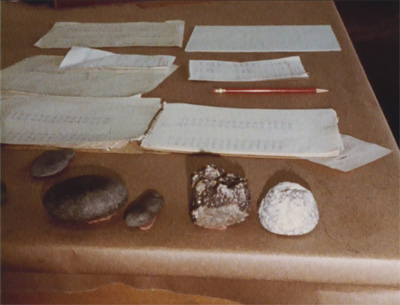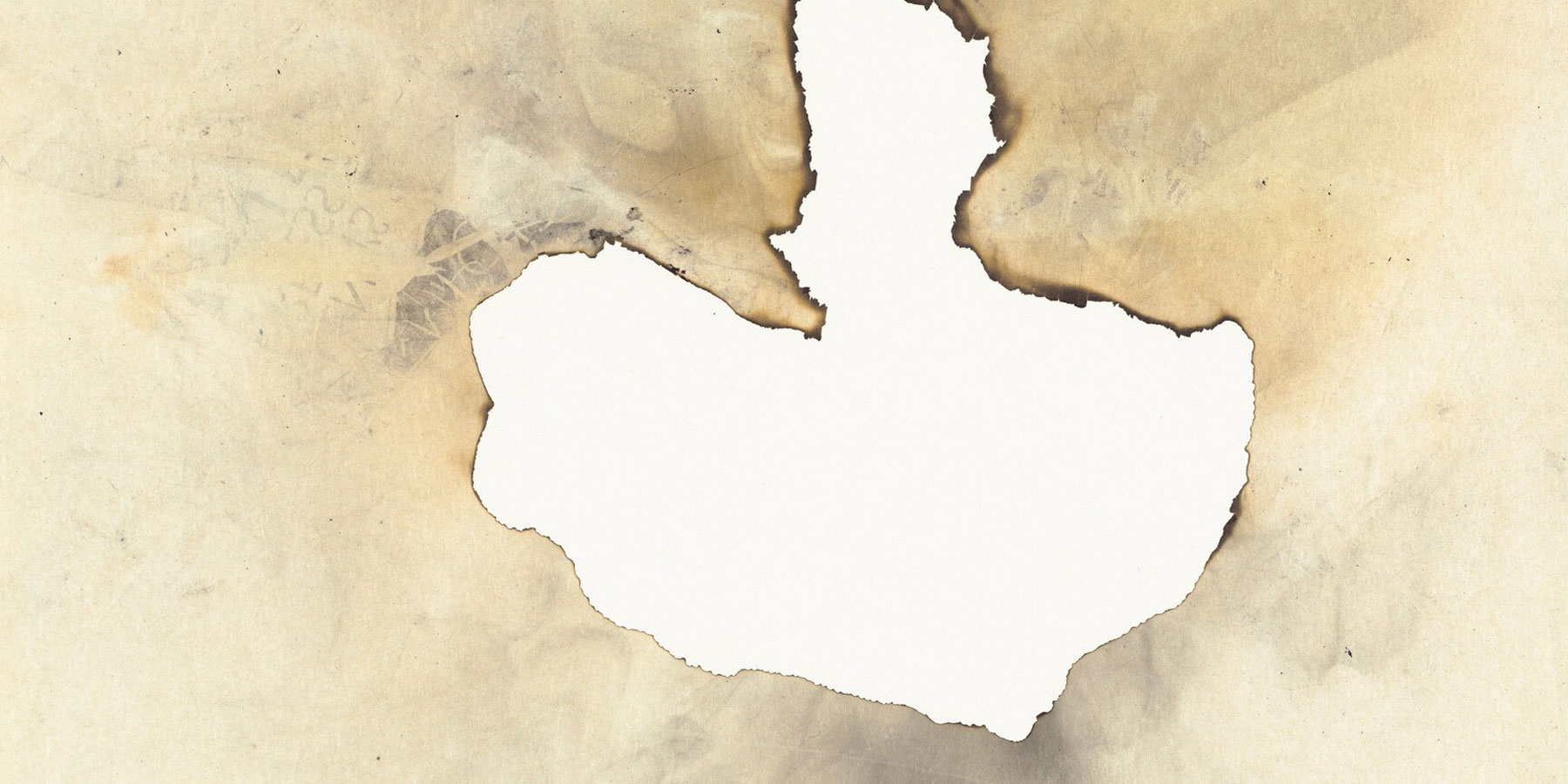Banner image: Detail, John Cage, Eninka 29, 1986, burned, smoked, and branded gampi mounted to paper, National Gallery of Art, Washington, Gift of Crown Point Press, 1996, © John Cage Trust
John Cage, Where R=Ryoanji, 1983
Cage's Where R=Ryoanji prints take their title and inspiration from the rock garden of a famous Zen temple in Kyoto, Japan. The garden consists of fifteen large stones situated in a rectangular bed of carefully raked gravel. Cage placed a selection of stones from his collection, positioned by chance operations, on the plate and traced their outlines. Like a mathematical formula, each print’s title dictated the number of times he outlined each stone. For example, the dense, allover mesh of marks in R3 (where R=Ryoanji) represents fifteen stones, each traced 225 times to produce a total of 3,375 stone silhouettes (15 x 15 x 15 equals 3,375).
Made during his fifth visit to Crown Point, the Ryoanji prints illustrate Cage’s growing readiness to assert his aesthetic will: Although chance dictated the position of the stones, he rotated any that extended beyond the edge of the plate so that the entirety of their outline could be traced on the plate. “I can’t fragment the stone…So the stone is either in the drawing or not. And I choose that it is!”

A selection of Cage's rocks and scores relating to the Ryoanji prints, 1983, photograph by Kathan Brown, Courtesy Crown Point Press
"Yes, No, Maybe: The Art of Making
Decisions," lecture by exhibition curators Judith Brodie and Adam Greenhalgh (audio)
Julie Mehretu, artist, in conversation with curator Judith Brodie, Diamonstein-Spielvogel lecture (audio)
"An Insider's Perspective," lecture by Kathan Brown, founder of Crown Point Press (audio)
Exhibition tour by curators Judith Brodie and Adam Greenhalgh (audio)


thumb.jpg)
